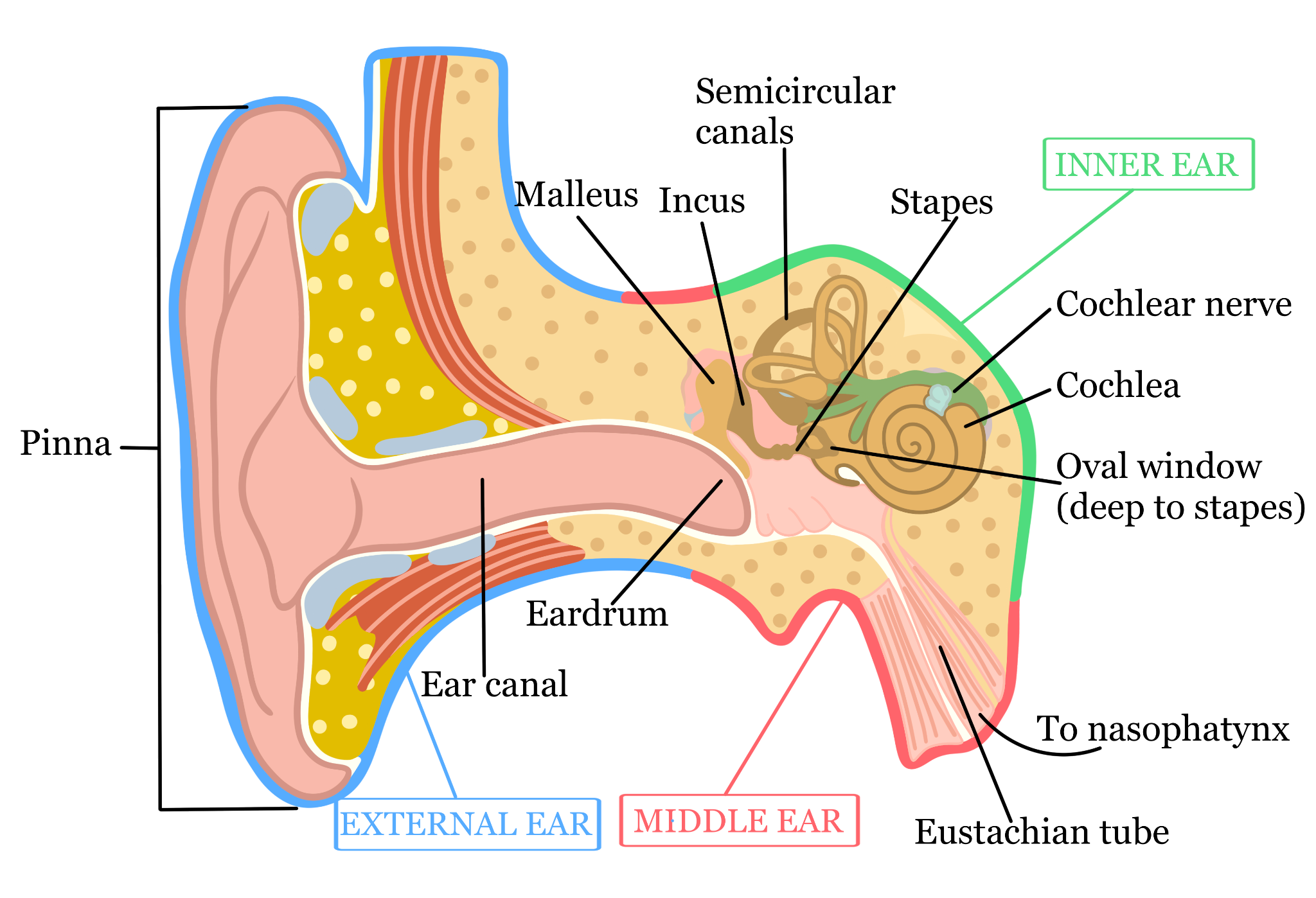Imagine a world without your ears. Even the simple act of standing becomes a challenge. Not only do your ears control what you hear, but they also control your balance. The inner ear, with its cochlea and the main parts of the vestibular system, is the control center of our balance. It provides a sense of balance and relays crucial information about our body position to our brain. The sensation of dizziness when you spin is a result of the brain receiving mixed signals from the fluid inside your ears, which is also in motion.

For simplicity, we will divide the ear into three portions: the external section, the middle section, and the inner section. Each portion contains structures related to hearing and, as mentioned earlier, balance. The external ear consists of the pinna, ear canal, and the eardrum. The pinna is the part of the ear most visible to us where we can receive sounds. The sounds then travel through the ear canal and reach the eardrum, separating the external and middle ear. Skin and cartilage are the primary components that make up the pinna. A condition that many fighters and wrestlers have known as cauliflower ears is caused by the disruption of blood flow to the cartilage of the ear, causing the cartilage to fold over on itself and give the ears a weird shape.
The middle section of the ear has the malleus, incus, and eustachian tube. The malleus transmits the vibrations received from the eardrums to the incus and eventually goes to the ear’s inner parts. The incus does a similar thing and transmits the received vibrations to the stapes. The eustachian tube equalizes the air pressure between your inner ear and the outside air. Equalizing air pressure can happen by yawning or swallowing. When you yawn or swallow, the muscles connected to the eustachian tube contract and cause it to open, equalizing air pressure. This tube also helps drain fluid from the ear’s middle part and protects the ear from harmful pathogens that might enter. It leads to the nasopharynx, a part of the respiratory system behind the nasal cavity.
The inner ear contains semicircular canals that contain fluids to help you keep your balance. If the fluids move around too much, you lose your balance and feel dizzy. You feel dizzy when you shake your head or spin around too much. The stapes are small, stirrup-like structures that transmit vibrations from the incus to the other parts of the inner ear. The cochlea is a spiral-shaped cavity that contains an organ called Corti. This organ produces nerve impulses in response to sound vibrations. When vibrations enter the cochlea, they move the fluid in there and trigger hair cells. When the fluid triggers these hair cells, they convert the mechanical energy into electrical energy transmitted to the brain, and we start to hear. Sounds are technically just vibrations that enter your ears and go to your brain, turning the vibrations into what we perceive as sound. The complicated yet effective process of converting vibrations into sound is truly fascinating.
Here is a step-by-step explanation of how we hear things. First, sound waves enter our ears and go through our ear canals. Then, it hits the eardrum and causes it to start shaking. Then, the eardrum sends the vibrations to the malleus, and the malleus transfers the vibrations to the incus and stapes. The stapes then shake fluid located in the semicircular canals and the cochlea. The shaking fluid then makes the hairs in the cochlea move and transmit nerve impulses to the brain using the cochlear nerve.
In summary, the ear takes in vibrations and uses its structures to transfer them, turning the mechanical signal or vibrations into nerve impulses taken in by the brain. Therefore, we can, by definition, hear things. As the amplitude of a sound wave increases, our brain perceives the sound as louder due to the higher intensity and greater energy involved.
Sources: BBC Science Focus, ASHA



